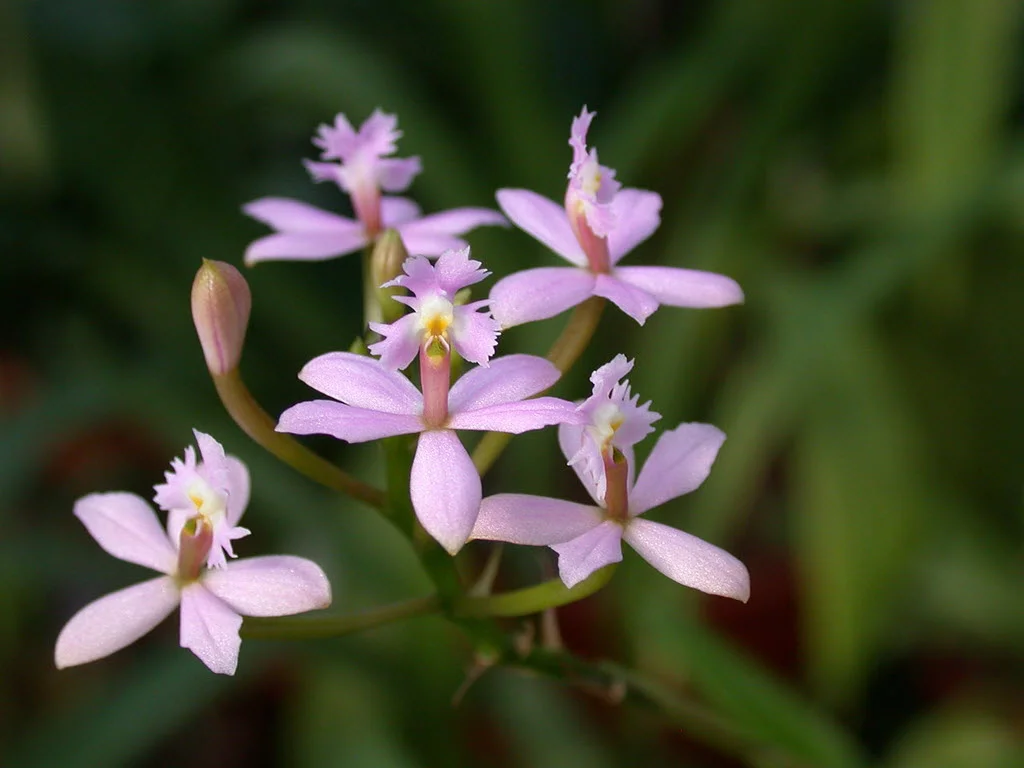Table of Contents
Pronunciation: sip-rih-PEE-dee-um
Other Names: Lady Slipper
Introduction
Native American tribes shroud Cypripediums in mystery. Legend says that one winter, many people fell ill. One young girl made the dangerous journey through the snow to find a medicine man to heal the sick.
Along the way, she lost her moccasins and left bloody footprints in the snow. When spring came, the blood footprints transformed into what is known today as the Lady's Slipper Orchid.
Cypripedium Californicum
This orchid is one of the most popular in North America, and you can find it in all of the 50 states. It is a terrestrial orchid, and a single plant can have up to 12 large, showy flowers in a variety of bright colors ranging from white and pink to yellow and red.
Temperature
Depending on the particular orchid, it is able to survive cooler temperatures throughout the year. They like daytime temperatures that range from 50°F to 65°F (10°C to 18°C). They can tolerate slightly warmer temperatures, but the daily temperature shouldn't exceed 80°F (26°C) as it won't tolerate it.
During the nighttime, this orchid can tolerate temperatures that fall around the freezing mark of 32°F (0°C), but they do better with temperatures around 45°F (7°C).
Light
To achieve optimal growth, it needs to have around 70% shade throughout the day. They don't tolerate direct sunlight, and they can burn easily. They do well set away from windows with netting over them to further displace the sun coming through the windows.
If you notice yellow splotches along the leaves or if your plant's leaves are starting to turn brown and curl, it's most likely getting too much sun. Adjust it and monitor how it does. Additionally, when it goes dormant, it'll require even less light.
Water and Humidity
Cypripediums like to be moist, but they won't tolerate getting soaked on a constant basis. You don't want to allow them to dry out either, and you should water them twice a week during the growing months from April through October.
From October through the end of May, these orchids go into a dormant period where they require less water and fertilizer. Cut back your watering to once a week with periodic checks to ensure they're staying moist. They like humidity levels around 50%.
Feeding
As soon as you notice new growth beginning at the start of the growing period, feed your orchid every 10 days with a diluted half strength balanced fertilizer. You can alternate this balanced fertilizer with a seaweed-based fertilizer every other feeding.
When your orchid goes dormant, stop fertilizing them throughout their dormant period. They won't need it until you start to see new growth in the spring, and then you can resume feeding your orchid every 10 days.
Potting
These orchids grow very well in large pots with very loose, light, well-aerated soil. If it's possible, get a rich humus soil that'll help retain moisture and mix it with perlite to improve drainage.
This plant only needs to be repotted every four or five years, and you should repot them in the spring when you see new growth starting, so it has the growing season to reestablish itself.
When you repot it, place the bud just below the soil's surface, but make sure you don't bury it. Finally, lightly cover it with a thin layer of fine gravel or sand to protect it from bugs.
Video
See these Cypripediums up close and personal in Brad's greenhouse. You'll see their beautiful burgundy color and slipper pouches that are especially evolved to attract pollinators.
These are a cold hardy orchid, and not a tropical slipper orchid.
More Stunning Orchids











